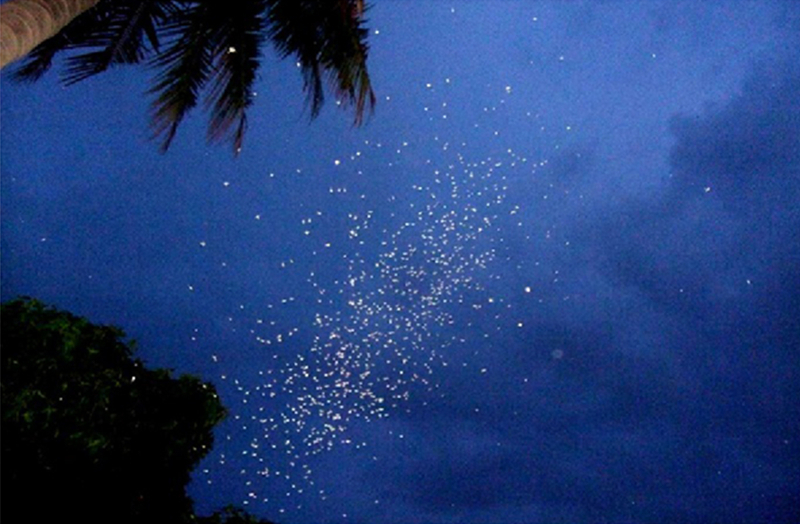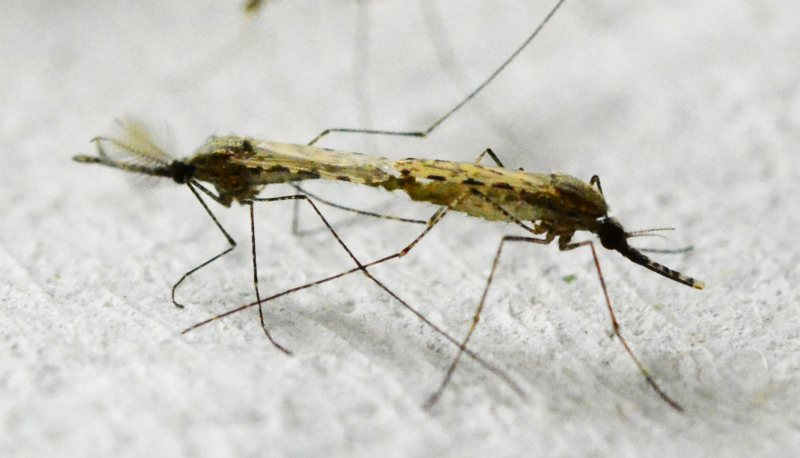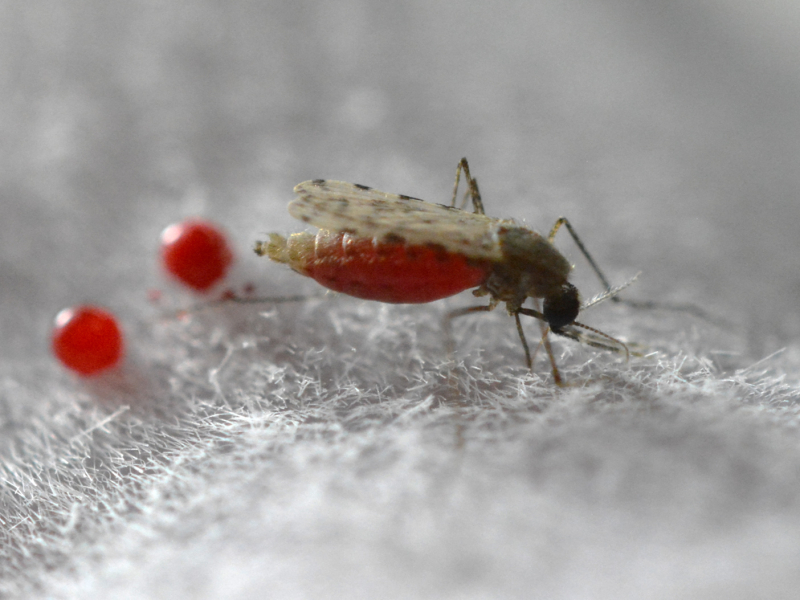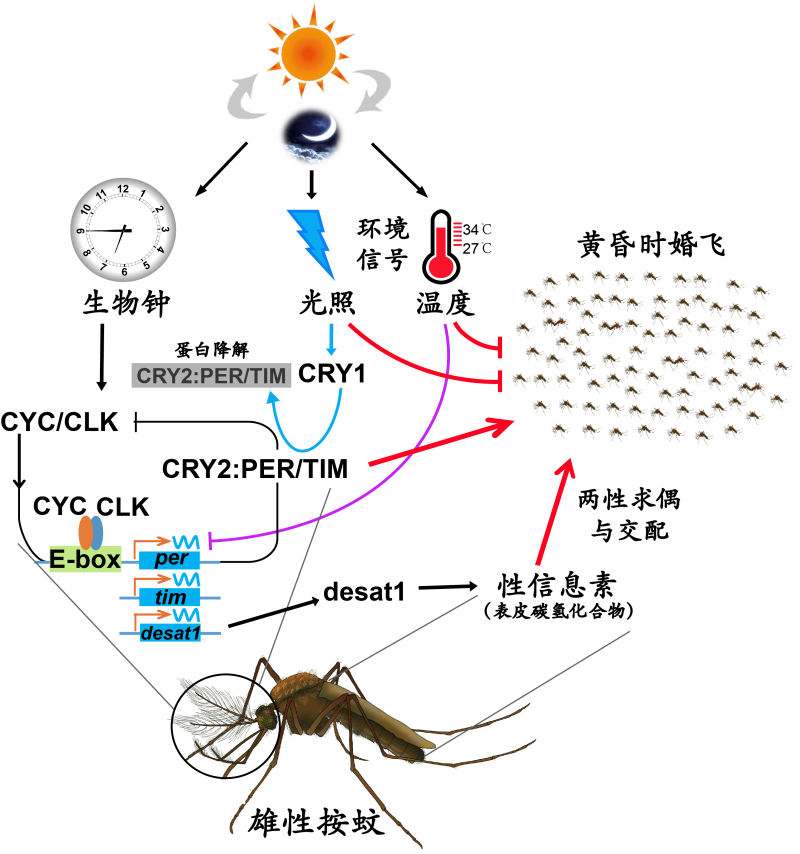The Mystery of Malaria Mosquito Anopheles Swarming and Mating Communication
A team led by Prof. WANG Sibao at Center for Excellence in Molecular Plant Sciences of the Chinese Academy of Sciences (CAS) and collaborators revealed that Anopheles swarming and mating are coordinately governed by clock genes, light and temperature. This study was published online in Science on January 22, 2021.
Mosquitoes are the most dangerous creature on earth, they transmit various human infectious diseases. Anopheles mosquitoes are the vector of malaria, which cause half million deaths every year and kill more people than all other animals including humans. Mosquito control is the mainstay in the global battle against malaria. Although the sterile insect technique (SIT) has been many successes in the control of other dipteran pests, earlier mosquito SIT programmes often achieved conflicting results. The failures have been linked to a lack of understanding of male mating biology, especially in terms of the ability of mass-reared male mosquitoes to communicate, courtship and mate with wild female mosquitoes.
Swarming is a natural mating behavior of mosquitoes, occurring at dusk. Each swarm contains tens to thousands of males. Females fly into the swarm to select a male for copulation. After insemination, the female would not be receptive to mating for the rest of life. This feature provides a unique advantage for mosquito genetic control. Understanding mosquito mating biology is crucial for the implementation of any genetic control programs via the release of either conventional sterile or genetically engineered males. However, the molecular mechanisms that modulate the swarming and mating activity in mosquitoes remain unclear.
In this study, the researchers used microarray transcriptional analysis to identify genes involved in swarming and mating behaviors by comparing gene expression profiles between swarming and nonswarming male heads of Anopheles mosquitoes. They found that the circadian master genes period (per) and timeless (tim) are markedly upregulated and rhythmically expressed in swarming male heads compared with non-swarming males. Knockdown of per and tim expression affects mating activity of male mosquitoes in both laboratory and semi-field conditions.
Because of the rotation of the earth and day/night cycle, light intensity and environmental temperature exert dramatic changes on organisms. Since Anopheles mosquitoes form swarms at dusk, the researches anticipated that the two most important environmental cues, light and temperature signals, may affect mosquito swarming and mating. Indeed, they found that adverse temperatures and prolonged light exposure during dark periods suppress mating activity. They further revealed that the light and temperature affect mosquito mating via modulating the expression of tim or per genes. Collectively, these results show that light and temperature together entrain the circadian clock, influencing the programming of mosquito swarming and mating.
Sex pheromones play important roles in the courtship behavior preceding mating. Many insects use cuticular hydrocarbons (CHC) as sex pheromones for species and sex recognition and courtship, but little is known about the role of CHCs in Anopheles mating, and no sex pheromone has been identified so far in Anopheles mosquitoes. Professor Wang and his team found that the desaturase gene desat1 is also upregulated in swarming males, and regulates the production of cuticular hydrocarbons, including heptacosane, in Anopheles mosquitoes. Importantly, mating bioassays further revealed that perfuming virgin Anopheles males with heptacosane markedly enhances mosquito mating activity. The researches further found that desat1 is a clock-controlled gene in mosquitoes and that light inhibits its transcription and reduces the production of CHCs. These results indicate that the synthesis of male cuticular heptacosane is dynamically regulated.
The increasing global threat of emerging and reemerging mosquito-borne diseases poses a serious threat to human health. Currently, control of malaria vectors focuses on the use of chemical insecticides. Due to the rapid emergence and spread of insecticide resistance, alternative tools are urgently needed to control mosquito populations. The findings from this study provide mechanistic insights on the molecular, environmental and chemical factors regulating Anopheles swarming and mating behaviors, and greatly contributes to the understanding of mating mechanisms, which may lead to vector control strategies targeting insect reproductive behavior.

Figure 1. Swarming and mating of Anopheles mosquitoes at dusk (Photography:Abdoulaye Diabate)

Figure 2. Anopheles mosquitoes mating (Left: male, Right: female. Photography: Wang Sibao)

Figure 3. Blood feeding of a female mosquito (Photography: Wang Sibao)

A schematic model of mosquito swarming and mating showing that these activities are governed by the clock genes, light and temperature.
The clock genes per and tim are markedly upregulated in the head of swarming male mosquitoes and modulate male swarming and mating activity. The desat1 gene, which is upregulated and rhythmically expressed in male heads, regulates the production of cuticular hydrocarbons. Of these, heptacosane enhances mating activity. Moreover, temperature and light affect mating activity and are important environmental cues for entraining the circadian clock in Anopheles mosquitoes.
Link:https://science.sciencemag.org/content/371/6527/411
Contact
Dr. Sibao Wang, Professor
Key Laboratory of Insect Developmental and Evolutionary Biology, Center for Excellence in Molecular Plant Sciences/Shanghai Institute of Plant Physiology and Ecology (SIPPE), Chinese Academic of Sciences
Email: sbwang@cemps.ac.cn